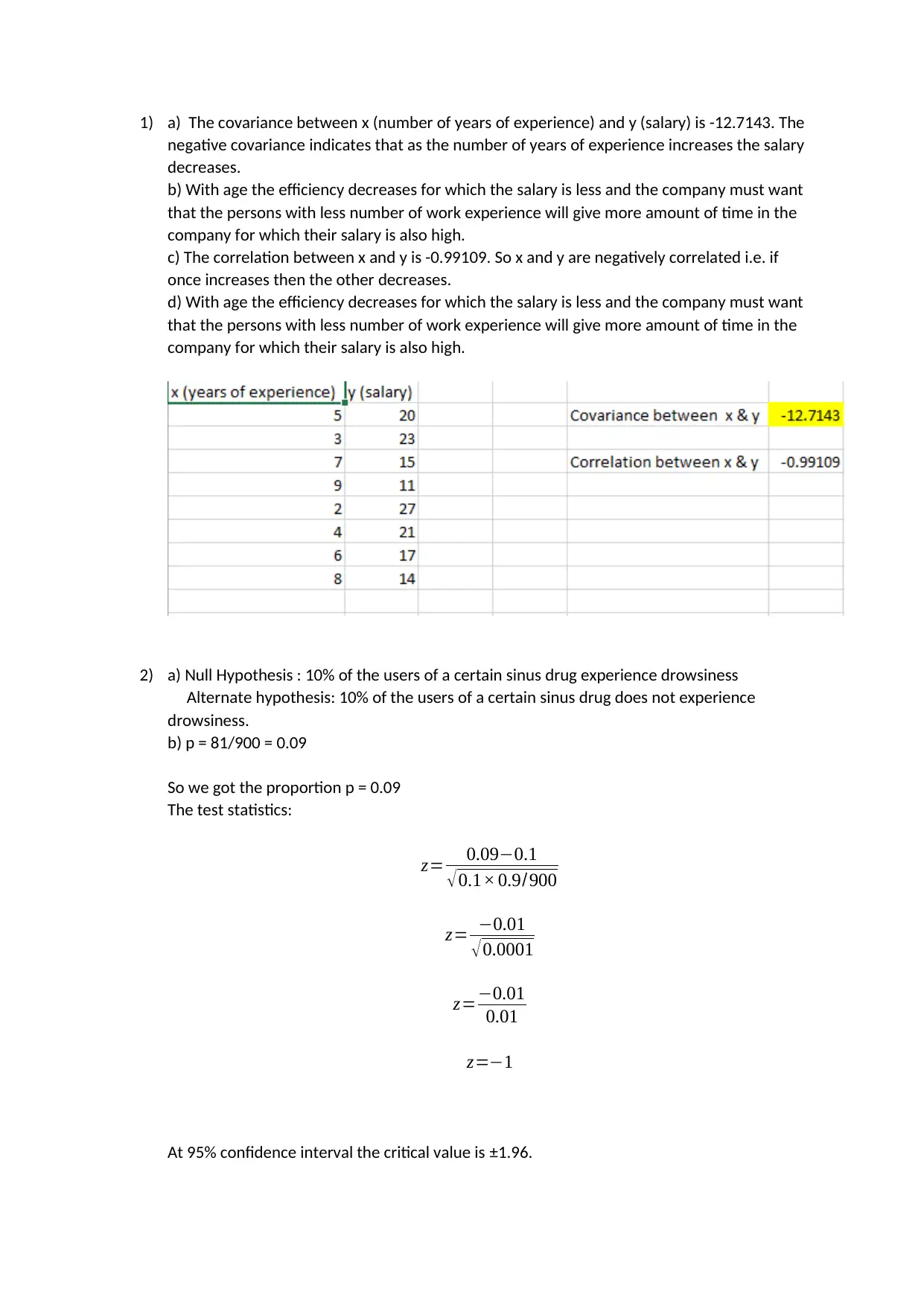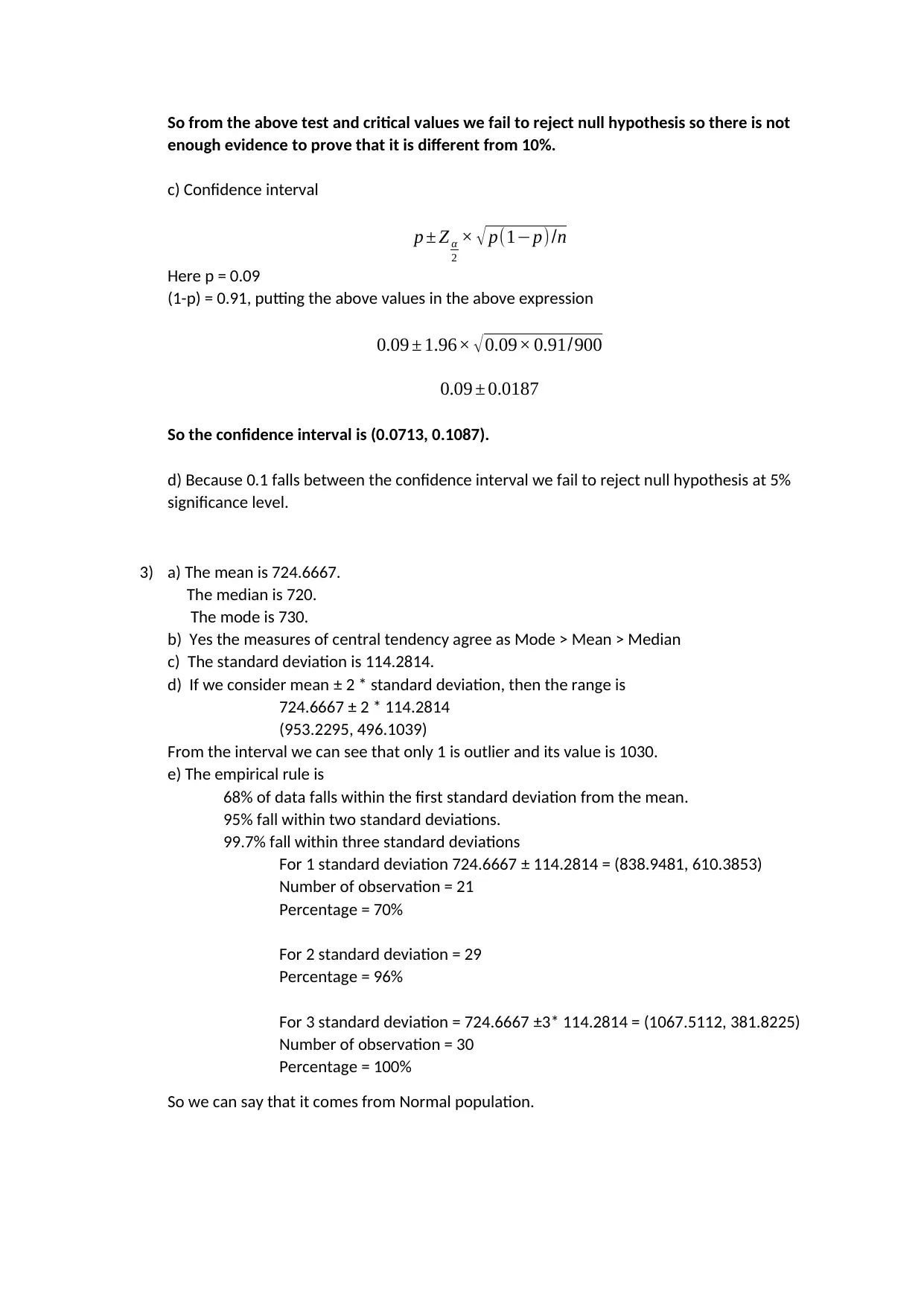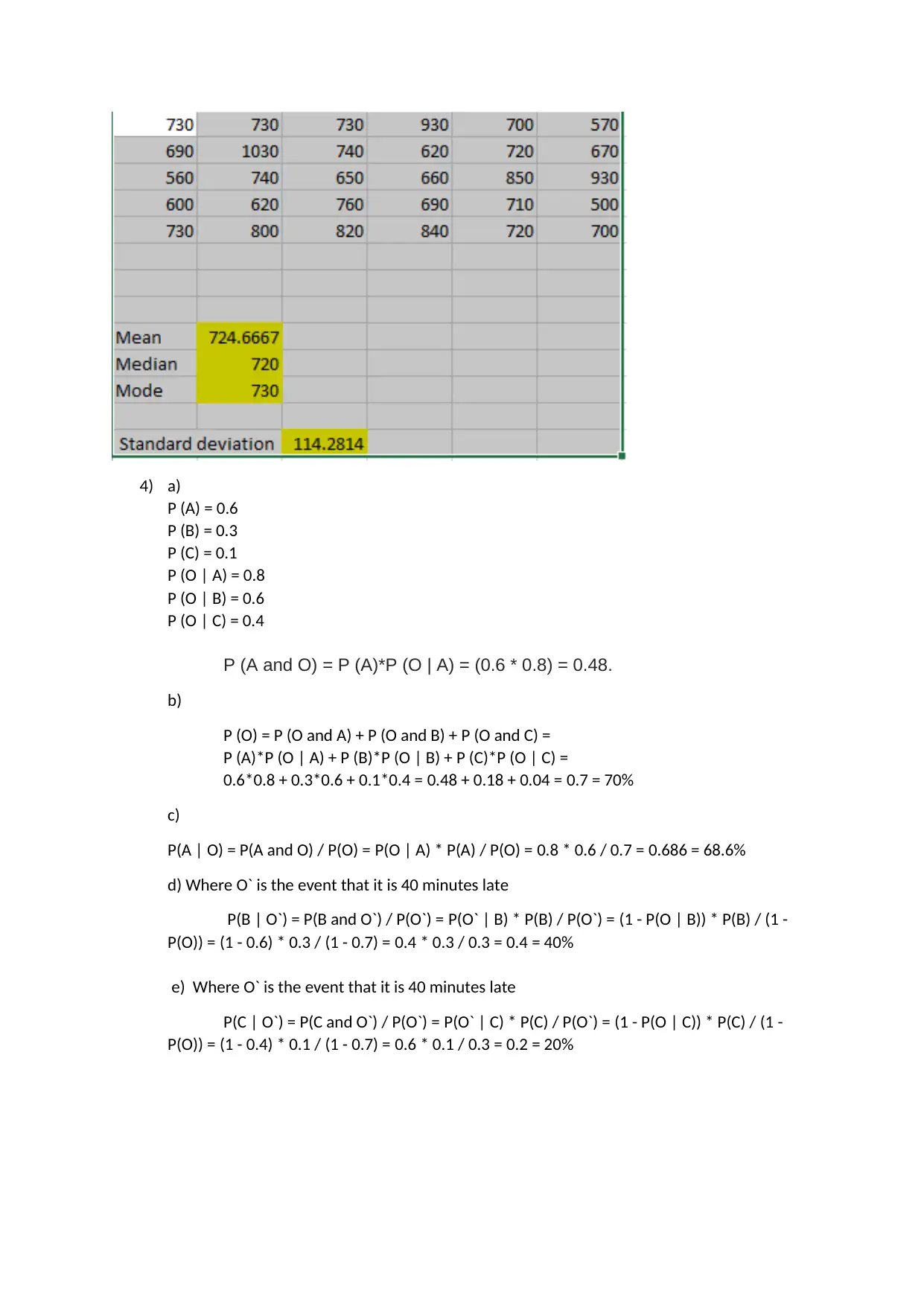Statistical Analysis Examples: Understanding Covariance, Hypothesis Testing, Central Tendency, and Probability
VerifiedAI Summary
In this document we will discuss about Statistical Analysis Examples and below are the summary points of this document:-
A negative covariance between years of experience and salary indicates that as experience increases, salary decreases. The correlation between them is also negative.
A statistical hypothesis test with a sinus drug showed that there was not enough evidence to prove that the proportion of users who experienced drowsiness was different from 10%.
In a dataset, the measures of central tendency for a variable were calculated as: mean = 724.6667, median = 720, and mode = 730. The standard deviation was 114.2814, and only one outlier was detected. The empirical rule showed that the data came from a normal distribution.
Probabilities were calculated for different events based on given probabilities. For example, the probability of event A given that event O occurred was calculated.
![[object Object]](/_next/static/media/star-bottom.7253800d.svg)
![[object Object]](/_next/static/media/star-bottom.7253800d.svg)



